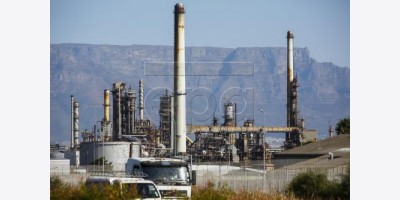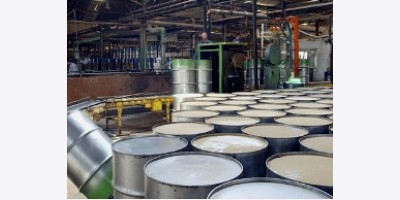In the short-term, Janet Yellen could be the only hope that oil bulls have left.
Oil prices have continued to plummet, except on August 24, they were no longer alone. Stock markets around the world crashed on what is becoming known as “Meltdown Monday.”
Driving the meltdown is the Chinese economy, which has suddenly looked extremely rickety since its main stock exchanges began crashing in June. The Shanghai Composite fell by 8.5 percent on Monday, precipitating a sell off across the globe.
Oil has been dropping since June, but the crash kicked oil’s decline into a higher gear on Monday, with WTI and Brent crumbling by more than 5 and 6 percent, respectively. WTI traded near $38 per barrel, and Brent is closing in on the $40-per-barrel mark, a threshold that was unfathomable just a few weeks ago. Both rebounded slightly on Tuesday.
In the short-term, there are few reasons for bulls to be optimistic. OPEC continues to ratchet up production in the face of collapsing prices. In July, the oil cartel boosted collective output by 100,000 barrels per day, well in excess of its declared target, led by large gains from Iraq and Iran. In fact, Iran’s oil minister, Bijan Namdar Zanganeh, stated on the ministry’s website that Iran would make all efforts to continue to increase production. “We will be raising our oil production at any cost and we have no other alternative,” he said. “If Iran’s oil production hike is not done promptly, we will be losing our market share permanently.”
Saudi Arabia is the only producer that could significantly affect prices. With Brent now nearing $40 per barrel, there will be more pressure for them to reconsider their strategy of pursuing market share. But on Monday, the OPEC member poured cold water on such a scenario, reiterating the country’s position. “Even if prices fall further, OPEC won’t cut,” a Saudi official said. Saudi Arabia is indeed hurting from low oil prices, but just as its strategy is starting to bear fruit – U.S. oil production is declining – why stop now?
Tuesday brought some relief, as many battered companies staged a rally. China’s central bank responded to “Meltdown Monday” with another interest rate cut, the fifth time it has done so over the past year.
The rally could be short-lived. Emerging markets are looking weaker by the day, oil continues to be oversupplied, and China has not even come close to reassuring the world about its financial health. The Chinese central bank may have raised interest rates, but that did not stave off another sell off on Tuesday. The Shanghai Composite fell by another 7.63 percent on August 25.
Moreover, it was the Chinese government’s lack of action on Monday that precipitated the global meltdown. Market movements – in China’s stock exchanges and its currency – have become largely based on government interventions, especially since June when the government stepped in to prop up asset prices. That has the markets dependent on the government – prices jump on new interventions, but drop when the government decides not to act. As a result, the perceived lack of intervention to rescue the Shanghai Composite on Monday (only to be followed by a rate cut on Tuesday) caused a sell off.
But at some point, the cost of intervention becomes too high. The government has blown more than $200 billion in foreign exchange in an effort to keep the yuan from further devaluation. What comes next is anybody’s guess.
While the U.S. economy appears to be on relatively strong footing – at least compared to China, other emerging markets, or even other industrialized countries – the global stock market meltdown could pose threats all the same. Several major U.S. banks crashed as the markets opened Monday morning, although they regained some ground. JP Morgan was briefly down 20 percent. Many of the largest U.S. banks saw their share prices drop by more than 5 percent.
What does all of this mean for oil? The downside risks appear to be growing, even as oil reaches new lows. In the short-term, the best chance that oil has from dropping further is action from the Fed.
The Fed had telegraphed its plans to market watchers, suggesting that it would raise interest rates in September. But now that global financial turmoil has reached U.S. markets, the Fed could reconsider, in order not to further stoke the selling frenzy. “Meltdown Monday” surely caught the attention of Fed officials. Investors now think there is a much lower chance of a rate increase next month, with the probability pegged at 24 percent this week, down from 48 percent last week, according to Bloomberg.
For oil bulls, that’s not much to pin your hopes on, but it could be one of the few reasons for optimism in the short-term.
By James Stafford of Oilprice.com























